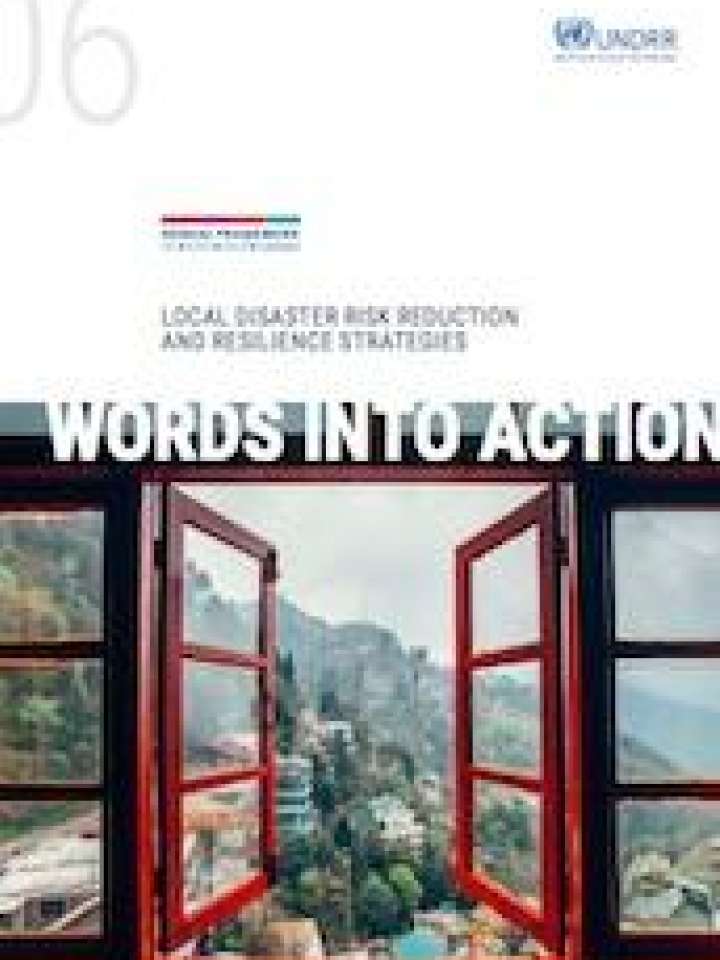Words into Action guidelines: Implementation guide for local disaster risk reduction and resilience strategies
The Sendai Framework for Disaster Risk Reduction 2015-2030 (Sendai Framework) charts the global course on disaster risk reduction (DRR) matters over the next 15 years. It defines a set of targets and indicators to monitor progress and achievement nationwide and locally. Specifically, Target (E) calls to “substantially increase the number of countries with national and local disaster risk reduction strategies”. Drawing from consultations and discussions, and with the aim of providing practical guidance to support the implementation of the new framework, the United Nations Office for Disaster Risk Reduction (UNDRR) introduces Words into Action (WIA) guidelines on selected topics. Local disaster risk reduction and resilience strategies is one of them.
The aim of this guidebook is to advise local governments (authorities, planners and managers at city or other subnational levels) on developing and implementing a holistic and integrated local DRR strategy that contributes to building resilience at the local scale and that accommodates to a national strategy whenever one is in place. It outlines what a local DRR and resilience strategy should look like and what is needed to create and implement one. Local strategies, while aligned with their national counterparts, are generally more specific. They reflect the local context and hazard profile and tend to concentrate on the planning and implementation phases, clearly assigning roles and responsibilities at the subnational level.
The main body of the guidebook is complemented with multiple resources. At the end of each section, the guideline provides suggestions for further exploring specific aspects, useful tools to put in practice some of the recommendations and additional literature for those interested in the topic. Similarly, guiding questions for local authorities, planners and managers are strategically placed across the chapters to provide the reader with a space for reflection. The complete list of questions is compiled in Annex II. Finally, vignettes of case studies are included to illustrate the main recommendations and to highlight best practices. Details of each case study are consolidated in Chapter 6.

